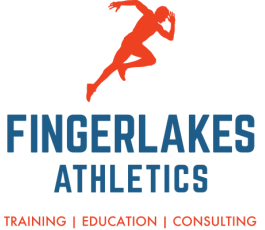|
While working out in the gym, it is common to hear those working out dispensing “expert” advice to anyone that will listen. Two common pieces of misinformation is strength training for younger athletes and “muscle confusion.”
It is not uncommon to hear that adolescents should not lift weights as this will either cause them become “muscle bound” or cause injury to their growth plates. Gaining muscle size requires the release of hormones that are not yet present in adolescents, so rather than viewing weight training as a body building exercise, it should be viewed as part of a general fitness and conditioning program. The inclusion of strength training at a younger level allows for neuromuscular recruitment and training that translates to increases in speed and power in a sport setting. Additionally, strength training can support joint stability and improve movement quality as a result of this neuromuscular control. The concern for epiphyseal (growth plate) injuries are unfounded, as strength training does not cause excessive stress to these areas. However, the American Academy of Pediatrics does recommend that maximal lifts be avoided. This type of lifting can place additional strain on the body of anyone and younger athletes need to develop proper lifting mechanics in the absence of maximal effort lifts. Strength training plays a vital role in the development of neuromuscular coordination, strength and endurance, with minimal risk of injury. As such, its utilization should be encouraged, rather than discouraged with outdated misinformation. Children interested in gaining strength should focus their efforts on developing strength in movement patterns (squatting, lunging, hinging, horizontal pressing/pulling, vertical pressing/pulling) in a progressive manner rather than isolating specific muscles under supervision from qualified personnel. Muscle confusion has become mainstream in pop culture as a way to get people active and moving in a variety of ways that stimulate the body in a variety of manners and causing “confusion”. The term that is being replaced is adaptation. The goal of an exercise is to progressively improve (whether that is strength, size, speed or endurance) and to positively adapt to the load that is being placed on the body. Thinking of improvement as an equation Positive Adaptation = Load + rest + nutrition allows the body the chance to recover. Rest is both adequate sleep and not overloading the same muscle group or energy system too frequently. Overloading can lead to mal-adaption in terms of burnout, fatigue, stress fractures, strains, etc. Unfortunately, the body is not “confused” by what is being performed, it merely reacts (either in a positive or a negative way). What is being lost in this nomenclature is where exercise goals come into play. Effective exercise is based upon establishing and achieving goals, which requires progressive overload and positive adaptation to achieve success. By and large, adding in several workout methods together without a long term goal coupled with lack of sleep, extraneous life stress and poor nutrition leads to mal-adaptation and possibly injury. Rather than trying to confuse the body, we should be encouraging people to get active in a variety of ways that stimulates positive change. Intense exercise in any form without adequate recovery and nutritional strategies is not a recipe for long term success. Intentional exercise to stimulate an appropriate response is a healthier approach to exercise. While many people want to help others and dispense their wisdom to all who will listen, it is important to understand what is being said and that, in some cases, regardless of the intent, the message is inaccurate, and potentially, deleterious. If you are ever unsure about your exercise or safety, it is always recommended to seek assistance from a trained, certified and/or licensed professional who specializes in health and fitness. Conclusions
References American Academy of Pediatrics. (2001). Strength training by children and adolescents. Pediatrics, 107(6), 1470-1472. American Academy of Pediatrics. (2008). Strength training by children and adolescents. Pediatrics, 121, 835-840. Faigenbaum, A. D. (2000). Strength training for children and adolescents. Clinics in Sports Medicine, 19(4), 593-619. Sands, W. A., Wurth, J. J., & Hewit, J. K. (2012). The National Strength & Conditioning Association’s (NSCA) Basics of Strength and Conditioning Manual.
0 Comments
|
AuthorI write on sport management, fitness, sports medicine and business topics to help you reach your goals Archives
February 2024
Categories
All
|
|
Home
About Contact |
To learn more about what services we offer, to schedule an appointment or to get prices please contact me at
[email protected] (607)279-6791 *This site is for educational purposes only, it is not meant to diagnose, treat or replace medical advice. Before starting an exercise program always make sure that you are healthy and able to do so safely.* |


 RSS Feed
RSS Feed